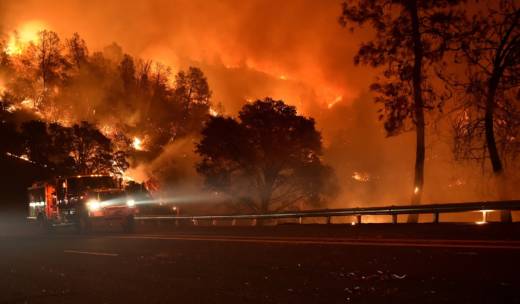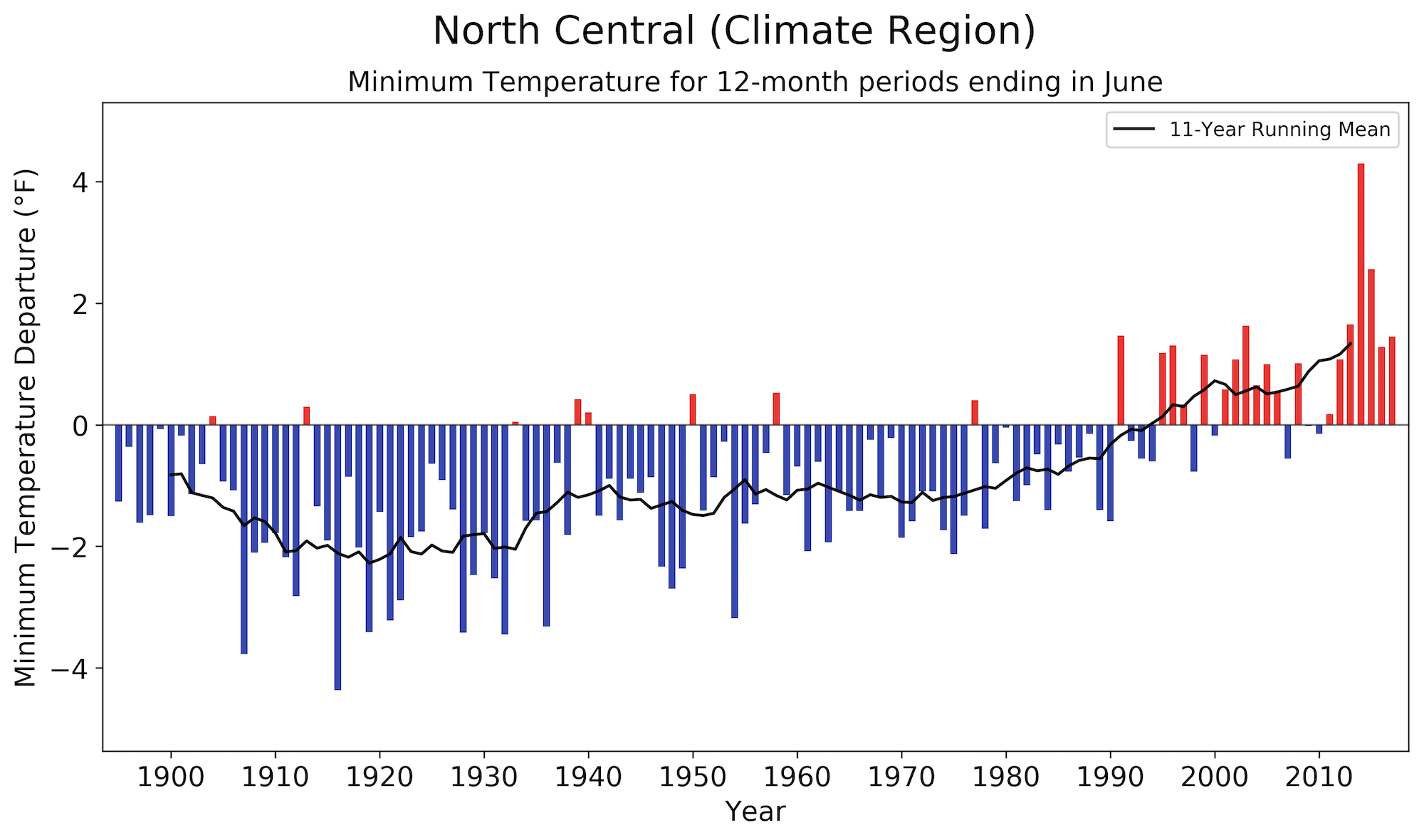It will most likely be weeks before the County Fire west of Sacramento is completely extinguished. By Friday it had consumed nearly 140 square miles — an area larger than Las Vegas.
Firefighters say it was a vicious cycle of weather conditions, terrain and vegetation that made it one of the fastest-growing fires in recent memory. But there was something else at work: a relatively new challenge confronting fire crews.
Scientists have noted that nighttime temperatures — overnight lows, in particular — are rising at a faster rate than daytime highs.
“It is a significant difference,” says Tim Brown, who directs the Western Regional Climate Center in Reno. “Both temperatures are rising, but the minimum temperatures are rising even more.”
Brown says the difference in rates first started showing up in the data around 1980, and that overnight lows are now running about 2 degrees F above the 1981-2010 period that climate scientists use as a benchmark.


